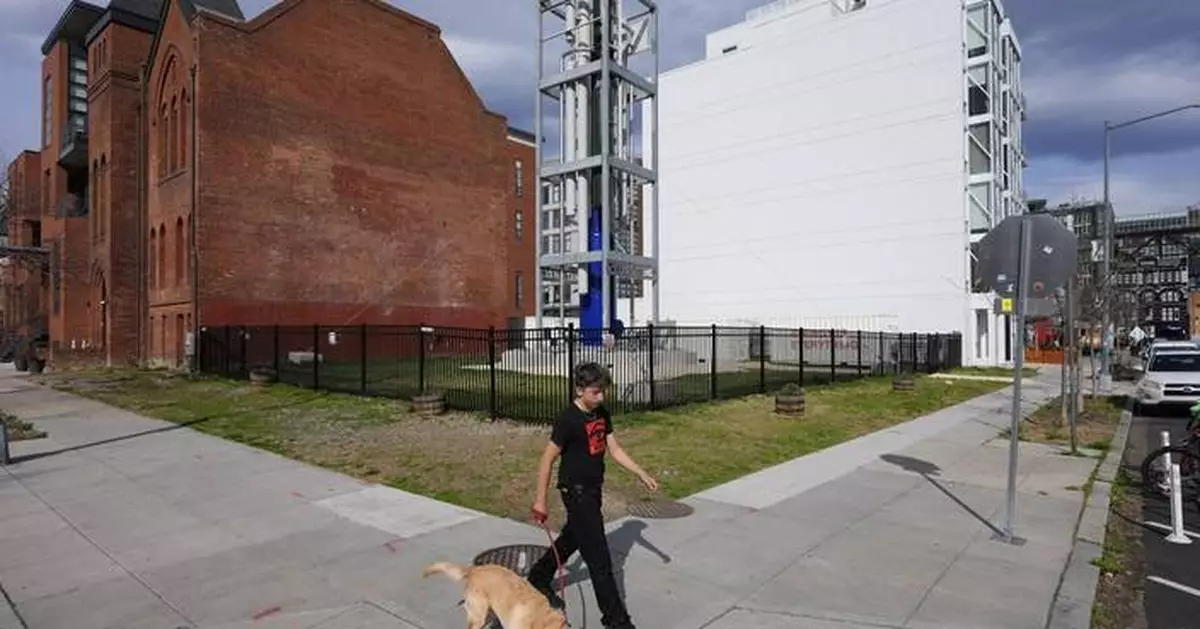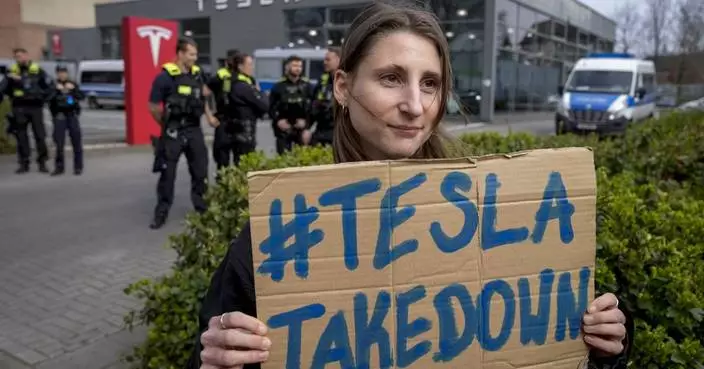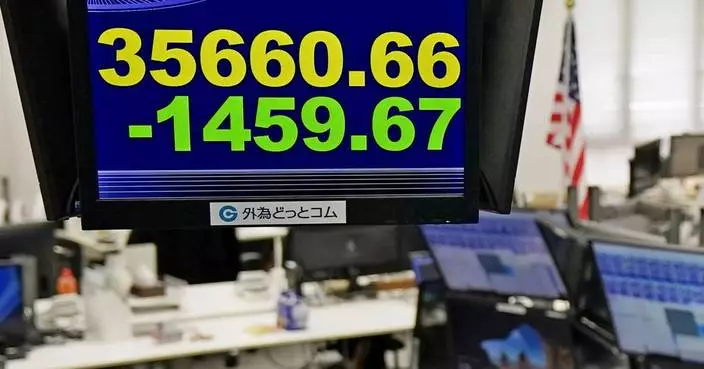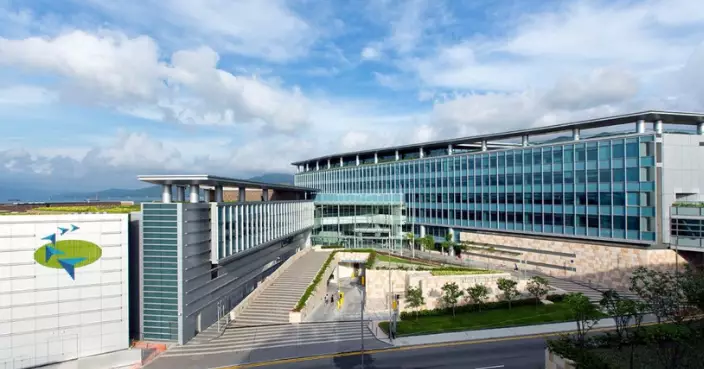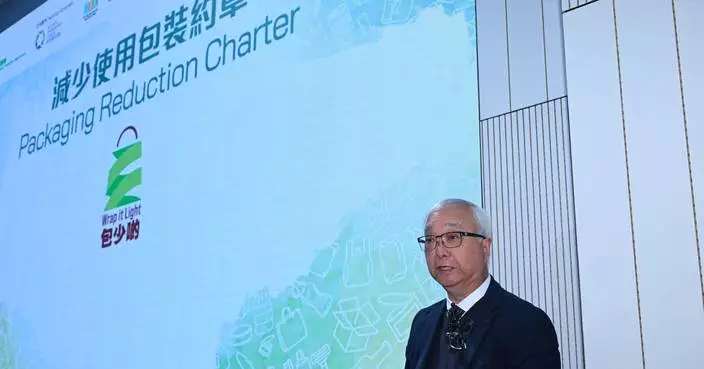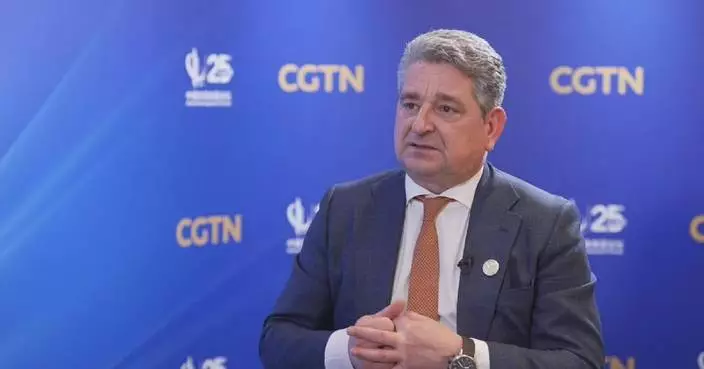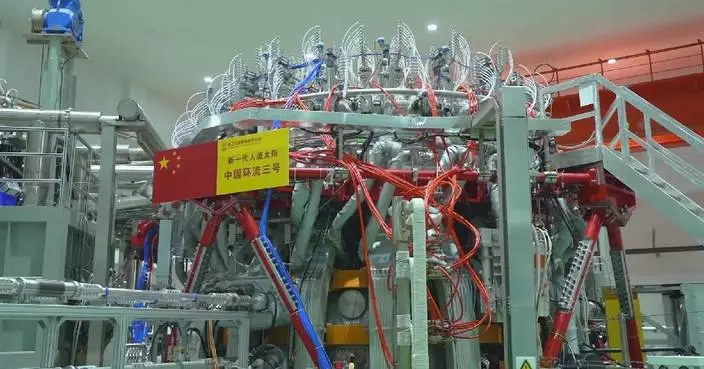HARRISBURG, Pa. (AP) — With the promise of newer, cheaper nuclear power on the horizon, U.S. states are vying to position themselves to build and supply the industry's next generation as policymakers consider expanding subsidies and paving over regulatory obstacles.
Advanced reactor designs from competing firms are filling up the federal government's regulatory pipeline as the industry touts them as a reliable, climate-friendly way to meet electricity demands from tech giants desperate to power their fast-growing artificial intelligence platforms.
The reactors could be operational as early as 2030, giving states a short runway to roll out the red carpet, and they face lingering public skepticism about safety and growing competition from renewables like wind and solar. Still, the reactors have high-level federal support, and utilities across the U.S. are working to incorporate the energy source into their portfolios.
Last year, 25 states passed legislation to support advanced nuclear energy and this year lawmakers have introduced over 200 bills supportive of nuclear energy, said Marc Nichol of the Nuclear Energy Institute, a trade association whose members include power plant owners, universities and labor unions.
“We’ve seen states taking action at ever-increasing levels for the past few years now,” Nichol said in an interview.
Smaller reactors are, in theory, faster to build and easier to site than conventional reactors. They could be factory-built from standard parts and are touted as flexible enough to plunk down for a single customer, like a data center or an industrial complex.
Advanced reactors, called small modular reactors and microreactors, produce a fraction of the energy produced by the conventional nuclear reactors built around the world for the last 50 years. Where conventional reactors produce 800 to 1,000 megawatts, or enough to power about half a million homes, modular reactors produce 300 megawatts or less and microreactors produce no more than 20 megawatts.
Tech giants Amazon and Google are investing in nuclear reactors to get the power they need, as states compete with Big Tech, and each other, in a race for electricity.
For some state officials, nuclear is a carbon-free source of electricity that helps them meet greenhouse gas-reduction goals. Others see it as an always-on power source to replace an accelerating wave of retiring coal-fired power plants.
Tennessee Gov. Bill Lee last month proposed more than $90 million to help subsidize a Tennessee Valley Authority project to install several small reactors, boost research and attract nuclear tech firms.
Long a proponent of the TVA's nuclear project, Lee also launched Tennessee's Nuclear Energy Fund in 2023, designed to attract a supply chain, including a multibillion-dollar uranium enrichment plant billed as the state's biggest-ever industrial investment.
In Utah, where Gov. Spencer Cox announced “Operation Gigawatt” to double the state's electricity generation in a decade, the Republican wants to spend $20 million to prepare sites for nuclear. State Senate President J. Stuart Adams told colleagues when he opened the chamber's 2025 session that Utah needs to be the “nation’s nuclear hub."
Texas Gov. Greg Abbott declared his state is “ready to be No. 1 in advanced nuclear power" as Texas lawmakers consider billions in nuclear power incentives.
Michigan lawmakers are considering millions of dollars in incentives to develop and use the reactors, as well as train a nuclear industry workforce.
One state over, Indiana lawmakers this month passed legislation to let utilities more quickly seek reimbursement for the cost to build a modular reactor, undoing a decades-old prohibition designed to protect ratepayers from bloated, inefficient or, worse, aborted power projects.
In Arizona, lawmakers are considering a utility-backed bill to relax environmental regulations if a utility builds a reactor at the site of a large industrial power user or a retired coal-fired power plant.
Still, the devices face an uncertain future.
No modular reactors are operating in the U.S. and a project to build the first, this one in Idaho, was terminated in 2023, despite getting federal aid.
The U.S. Department of Energy last year, under then-President Joe Biden, estimated the U.S. will need an additional 200 gigawatts of new nuclear capacity to keep pace with future power demands and reach net-zero emissions of planet-warming greenhouse gases by 2050 to avoid the worst effects of climate change.
The U.S. currently has just under 100 gigawatts of nuclear power operating. More than 30 advanced nuclear projects are under consideration or planned to be in operation by the early 2030s, Nichol of the NEI said, but those would supply just a fraction of the 200 gigawatt goal.
Work to produce a modular reactor has drawn billions of dollars in federal subsidies, loan guarantees and more recently tax credits signed into law by Biden.
Those have been critical to the nuclear industry, which expects them to survive under President Donald Trump, whose administration it sees as a supporter.
The U.S. remains without a long-term solution for storing radioactive waste, safety regulators are under pressure from Congress to approve designs and there are serious questions about industry claims that the smaller reactors are efficient, safe and reliable, said Edwin Lyman, director of nuclear power safety at the Union of Concerned Scientists.
Plus, Lyman said, “the likelihood that those are going to be deployable and instantly 100% reliable right out of the gate is just not consistent with the history of nuclear power development. And so it’s a much riskier bet.”
Nuclear also has competition from renewable energies.
Brendan Kochunas, an assistant professor of nuclear engineering at the University of Michigan, said advanced reactors may have a short window to succeed, given the regulatory scrutiny they undergo and the advances in energy storage technologies to make wind and solar power more reliable.
Those storage technologies could develop faster, bring down renewables' cost and, ultimately, make more economic sense than nuclear, Kochunas said.
The supply chain for building reactors is another question.
The U.S. lacks high-quality concrete- and steel-fabrication design skills necessary to manufacture a nuclear power plant, Kochunas said.
That introduces the prospect of higher costs and longer timelines, he said. While foreign suppliers could help, there also is the fuel to consider.
Kathryn Huff, a former top Energy Department official who is now an associate professor at the University of Illinois Urbana-Champaign, said uranium enrichment capacity in the U.S. and among its allies needs to grow in order to support reactor production.
First-of-their-kind reactors need to get up and running close to their target dates, Huff said, "in order for anyone to have faith that a second or third or fourth one should be built.”
Follow Marc Levy on X at: https://x.com/timelywriter.
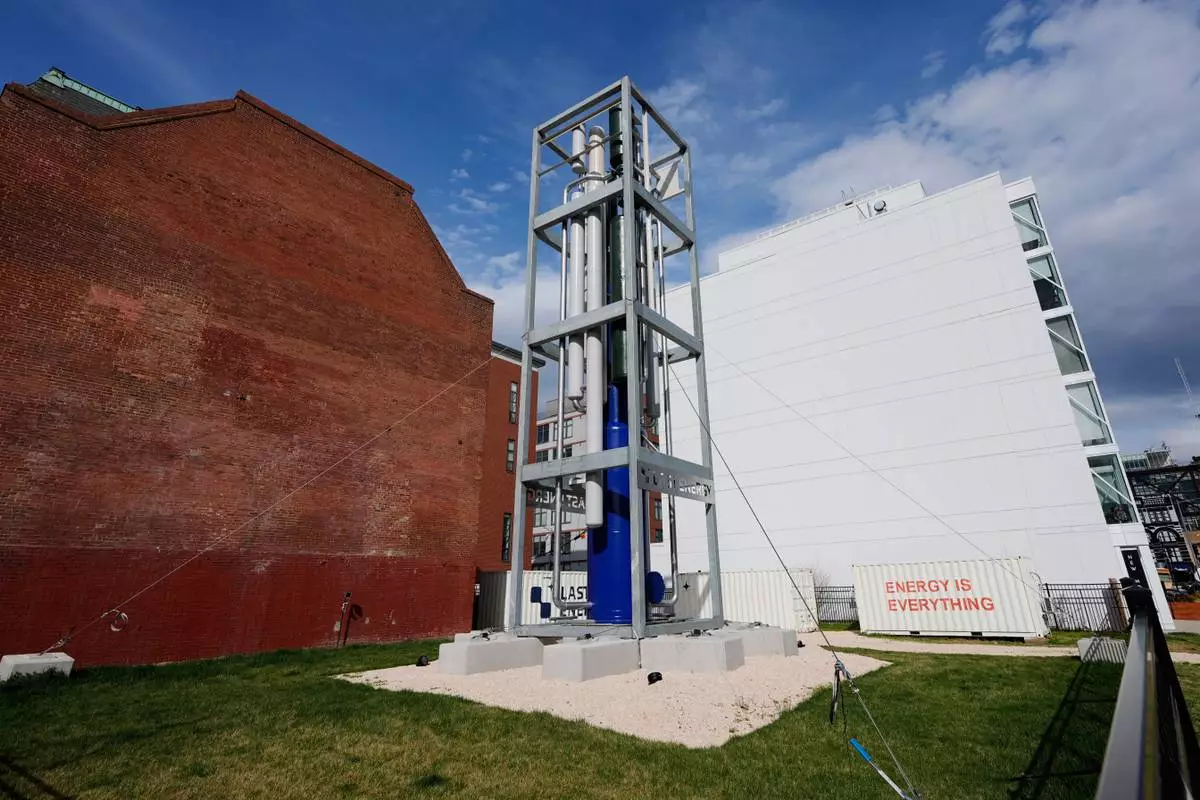
A Last Energy prototype of a microreactor on display at the corner of 10th and V Street NW in Washington, Tuesday, March 25, 2025. (AP Photo/Pablo Martinez Monsivais)
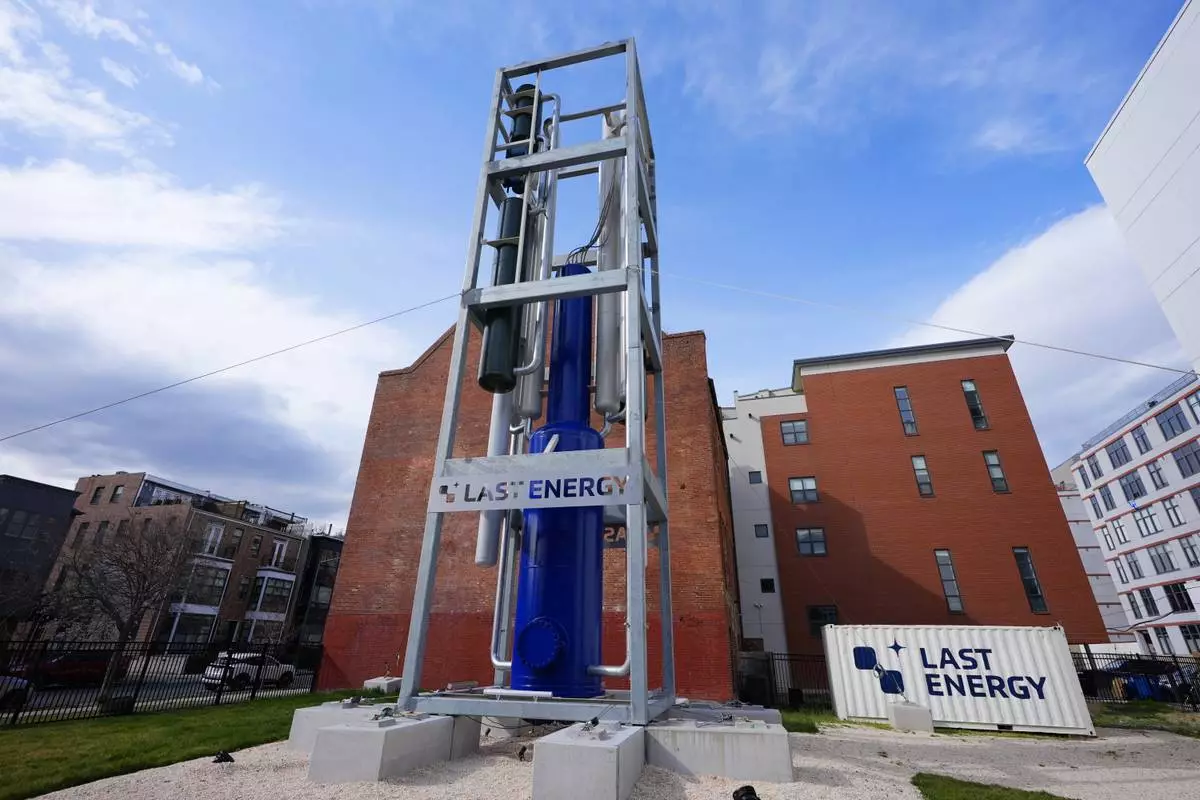
A Last Energy prototype of a microreactor on display at the corner of 10th and V Street NW in Washington, Tuesday, March 25, 2025. (AP Photo/Pablo Martinez Monsivais)
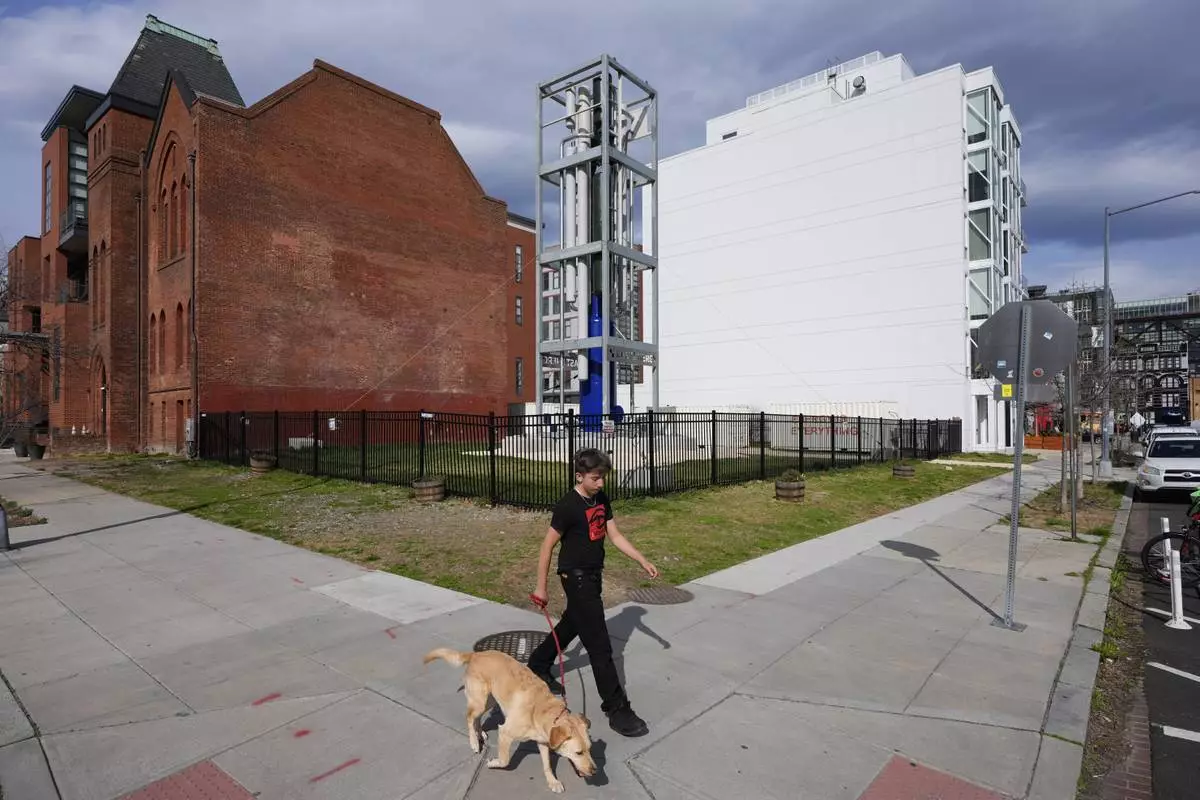
A youth walks a dog past a Last Energy prototype of a microreactor on display at the corner of 10th and V Street NW in Washington, Tuesday, March 25, 2025. (AP Photo/Pablo Martinez Monsivais)
President Donald Trump says Wednesday will be “Liberation Day” — when he plans to roll out a set of tariffs he promises will free the United States from foreign goods.
The details of Trump’s next round of import taxes are still sketchy. Most economic analyses say average U.S. families would have to absorb the cost of his tariffs in the form of higher prices and lower incomes. But an undeterred Trump is inviting CEOs to the White House to say they're investing hundreds of billions of dollars in new projects to avoid the import taxes.
Here's the latest:
President Trump has just started his second term, his last one permitted under the U.S. Constitution. But he’s already started talking about serving a third one.
“There are methods which you can do it,” Trump insisted to NBC News in a telephone interview Sunday.
That follows months of Trump making quips about a third term, despite the clear constitutional prohibition on it. “Am I allowed to run again?” Trump joked during a House Republican retreat in Florida in January. Just a week after he won election last fall, Trump suggested in a meeting with House Republicans that he might want to stick around after his second term was over.
Trump’s musings often spark alarm among his critics even when they’re legally impossible, given that he unsuccessfully tried to overturn his 2020 election loss and has since pardoned supporters who violently attacked the U.S. Capitol on Jan. 6, 2021.
But Trump, who will be 82 when his term ends, has also repeatedly said this will be his last term. Trying for another also would flatly violate the Constitution.
▶ Read more about Trump’s comments about a third term
Press secretary Karoline Leavitt said National Security Adviser Mike Waltz continues to have Trump’s confidence and that it was done discussing the embarrassing matter of senior officials communicating about plans for an airstrike against the Houthis in Yemen on a commercial messaging app.
“This case has been closed here at the White House as far as we are concerned,” Leavitt said.
Waltz added a journalist to the sensitive group chat on the platform Signal, where Defense Secretary Pete Hegseth divulged operational details on the strike and Vice President JD Vance discussed his reservations about the operation.
Leavitt said “there have been steps made to ensure that something like that can, obviously, not happen again,” but did not provide any clarity on what those steps were. Lawmakers on Capitol Hill have called for an investigation into the sensitive conversation playing out on Signal.
He’ll be joined in the Rose Garden by his Cabinet, press secretary Karoline Leavitt announced Monday.
Leavitt said Trump believes “it’s time for reciprocity” but said the details of the announcement — which have roiled the financial markets — are up to Trump to announce. She said Trump had been presented with several proposals by his advisers but the president would make a final decision and, right now, Trump wasn’t contemplating any country-wide exemptions from the tariffs.
The State Department said in a statement Monday that they were removed Sunday night and that the group included murderers and rapists.
The statement didn’t give nationalities, but the office of El Salvador President Nayib Bukele said Salvadorans and Venezuelans were among the prisoners.
The men were transported to El Salvador’s maximum security prison, where they changed into the standard white T-shirts and shorts and had their heads shaved. Hundreds of migrants facing deportation were sent there earlier this month.
The Trump administration is pulling back a final round of federal pandemic aid from schools across the country, saying the money wasn’t being spent on academic recovery.
States were notified Friday that the Education Department will not disburse the remainder of the federal aid passed by Congress, although the vast majority has already been sent to schools.
The department didn’t say how much money is left of the total $189 billion approved by Congress, though officials said it’s in the billions. As of Feb. 19, the department said there was $4.4 billion left, or about 2%.
A senior department official said the money was being misused on costs including astroturf fields and “sets of bouncy glow balls.” The agency said it will consider requests for individual projects related to pandemic recovery.
Schools were supposed to spend the last of the relief by January, but the Biden administration allowed schools to request extensions.
The Council of Chief State School Officers urged the department to rethink the decision, saying schools have already spent the money for pandemic recovery efforts and were promised reimbursement.
The U.S. Institute of Peace is a congressionally created and funded think tank targeted by President Trump for closure.
Two board members of the institute have authorized replacing its temporary president with Nate Cavanaugh, the filing says. They ordered him, it says, to transfer the institute’s property to the General Services Administration, the federal government’s real estate manager, which is terminating hundreds of leases at the behest of Elon Musk’s Department of Government Efficiency.
The court filing asks U.S. District Judge Beryl Howell in Washington to stop the action or schedule a status conference to address the issues as soon as “practicable.”
The White House didn’t immediately respond to a request for comment.
The action follows a Friday night mass firing of nearly all of the institute’s 300 employees.
▶ Read more about DOGE and the U.S. Institute of Peace
President Trump’s preferred candidate for Wisconsin Supreme Court and his Democratic-backed challenger made a final blitz across the state Monday, the day before voting concludes in a race where early turnout has surged and spending is nearing $100 million.
Billionaire Elon Musk, a top Trump adviser, held a rally in Green Bay on Sunday night to push for the election of Brad Schimel, a Waukesha County judge and former Republican attorney general. He faces Susan Crawford, a Dane County judge and former attorney who fought for abortion rights and to protect union power.
Liberals currently hold a 4-3 advantage on the court, but the retirement of a liberal justice this year put the ideological balance in play. The court in battleground Wisconsin is expected to rule on abortion rights, congressional redistricting, union power and voting regulations in the coming years.
▶ Read more about the Wisconsin Supreme Court race
The White House Correspondents Association says it canceled her from performing at its annual dinner because it wants to refocus the event on journalistic excellence.
The association’s announcement over the weekend made no mention of Ruffin’s appearance on a podcast by the Daily Beast last week in which she referred to the Trump administration as “kind of a bunch of murderers.”
Ruffin, a writer for NBC’s Seth Meyers and formerly a host of a Peacock talk show, also said she wouldn’t try to make sure her jokes would target politicians of different stripes, as she was told by the correspondents’ association.
Her comments drew angry responses from the Trump administration. The president isn’t expected to attend the April event, which in past years has featured comics such as Stephen Colbert and Colin Jost. The last time a comedian did not perform at the dinner was in 2019, when historian Ron Chernow spoke.
▶ Read more about Amber Ruffin and the White House correspondents’ dinner
Tocorón once had it all. A nightclub, swimming pools, tigers, a lavish suite and plenty of food. This wasn’t a Las Vegas-style resort, but it felt like it for some of the thousands who until recently lived in luxury in this sprawling prison in northern Venezuela.
Here, between parties, concerts and weeks-long visits from wives and children, is the birthplace of the Tren de Aragua, a dangerous gang that has gained global notoriety after Trump put it at the center of his anti-immigrant narrative.
But kidnappings, extorsion and other crimes were planned, ordered or committed from this prison long before Trump’s rhetoric.
The tiny, impoverished town where the Aragua Penitentiary Center is used to bustle with residents selling food, renting phone chargers and storing bags for prison visitors. Now, the prison is back under government control, and streets in the town, also called Tocorón, are mostly deserted.
▶ Read more about the Tren de Aragua gang
U.S. Attorney General Pam Bondi on Monday instructed the Justice Department to dismiss the lawsuit. Georgia Republican lawmakers passed the sweeping election overhaul in the wake of Trump’s 2020 election loss in the state.
The lawsuit, filed in June 2021 under former President Joe Biden, alleged the Georgia law was intended to deny Black voters equal access to the ballot. Bondi said the Biden administration was pushing “false claims of suppression.”
“Georgians deserve secure elections, not fabricated claims of false voter suppression meant to divide us,” she said.
The law was part of a trend of Republican-backed measures that tightened rules around voting, passed in the months after Trump lost his reelection bid to Biden, claiming without evidence that voter fraud cost him victory.
▶ Read more about Georgia’s election law
The letter — released Monday — was penned by a group from the National Academies of Sciences, Engineering, and Medicine, which was created in 1863 to provide expert guidance to the government.
Up to 19 Nobel laureates signed Monday’s letter, which described how the administration is slashing funding for scientific agencies, terminating grants to scientists, defunding their laboratories and hampering international scientific collaboration. Those moves will increasingly put the United States at a disadvantage against other countries, the letter predicted.
The signees said they’re speaking up for colleagues who “have kept silent to avoid antagonizing the administration and jeopardizing their funding.”
On the campaign trail, Trump used contentiousness around transgender people’s access to sports and bathrooms to fire up conservative voters and sway undecideds. And in his first months back in office, Trump has pushed the issue further, erasing mention of transgender people on government websites and passports and trying to remove them from the military.
For transgender people and their allies — along with several judges who’ve ruled against Trump in response to legal challenges — it’s a matter of civil rights for a small group. But many Americans believe those rights had grown too expansive.
Trump’s spotlight is giving Monday’s Transgender Day of Visibility a different tenor this year.
“What he wants is to scare us into being invisible again,” said Rachel Crandall Crocker, the executive director of Transgender Michigan who organized the first Day of Visibility 16 years ago. “We have to show him we won’t go back.”
▶ Read more about Transgender Day of Visibility
On Wall Street, the S&P 500 was down 1.3% following one of its worst losses of the past couple of years Friday. It’s on track to finish the first three months of the year with a loss of 6.4%, which would make this its worst quarter in nearly three years.
The Dow Jones Industrial Average was down 295 points, or 0.7%, as of 9:35 a.m. Eastern time, and the Nasdaq composite was 2.3% lower.
The U.S. stock market’s drops followed a sell-off that spanned the world earlier Monday as worries build that tariffs coming Wednesday from Trump will worsen inflation and grind down growth for economies. Trump has said he’s plowing ahead in part because he wants more manufacturing jobs back in the United States.
In Japan, the Nikkei 225 index dropped 4%. South Korea’s Kospi sank 3%, and France’s CAC 40 fell 1.5%.
▶ Read more about the financial markets
Calls from the U.S. to Roustan Hockey headquarters in Canada in recent weeks have been anything but routine, as bulk orders of name-brand sticks have suddenly become complicated conversations.
“These customers want to know: When their orders ship, will they have to pay an additional 25% tariff? And we respond by saying, ’Well, right now we don’t know, so they postpone their order or cancel their order because they want to know before they order what the cost is going to be,” said Graeme Roustan, who owns the company that makes and sells more than 100,000 hockey sticks annually to the U.S. market.
The prospect of 25% tariffs by Trump on Canadian imports, currently paused for some goods but facing full implementation Wednesday, has caused headaches if not havoc throughout the commercial ecosystem. The sports equipment industry is certainly no exception, with so many of the products manufactured for sports -loving Americans outside the U.S.
▶ Read more about the effects of possible tariffs on the price of sporting goods
U.S. immigration officials are asking the public and federal agencies to comment on a proposal to collect social media handles from people applying for benefits such as green cards or citizenship, to comply with an executive order from Trump.
The March 5 notice raised alarms from immigration and free speech advocates because it appears to expand the government’s reach in social media surveillance to people already vetted and in the U.S. legally, such as asylum seekers, green card and citizenship applicants – and not just those applying to enter the country. That said, social media monitoring by immigration officials has been a practice for over a decade, since at least the second Obama administration and ramping up under Trump’s first term.
▶ Read more about what the new proposal means and how it might expand social media surveillance
Elon Musk gave out $1 million checks on Sunday to two Wisconsin voters, declaring them spokespeople for his political group, ahead of a Wisconsin Supreme Court election that the tech billionaire cast as critical to President Donald Trump’s agenda and “the future of civilization.”
Musk and groups he supports have spent more than $20 million to help conservative favorite Brad Schimel in Tuesday’s race, which will determine the ideological makeup of a court likely to decide key issues in a perennial battleground state.
A unanimous state Supreme Court on Sunday refused to hear a last-minute attempt by the state’s Democratic attorney general to stop Musk from handing over the checks to two voters, a ruling that came just minutes before the planned start of the rally.
Two lower courts had already rejected the legal challenge by Democrat Josh Kaul, who argues that Musk’s offer violates a state law.
▶ Read more about Musk in Wisconsin
The group of Democrats, most of whom serve as their state’s top election official, is telling Congress the legislative proposal to add a proof of citizenship requirement when registering to vote could disenfranchise voters and upend election administration.
On Monday, the House Rules Committee is expected to consider the Safeguard American Voter Eligibility Act, known as the SAVE Act, which would require proof of citizenship to register to vote. The letter signed by 15 secretaries of state was sent Friday.
Voting by noncitizens is rare, but Republicans say any instances undermine public confidence. Last week, President Trump directed, among other things, an update to the federal voter registration form to require proof of citizenship. Legal challenges are expected.
In the letter, Democrats say it’s the “job of election officials to verify the eligibility of citizens to cast a ballot, not the job of citizens to convince the government that they are eligible to exercise their right to vote.”
Trump says Wednesday will be “Liberation Day” — a moment when he plans to roll out a set of tariffs that he promises will free the United States from foreign goods.
The details of Trump’s next round of import taxes are still sketchy. Most economic analyses say average U.S. families would have to absorb the cost of his tariffs in the form of higher prices and lower incomes. But an undeterred Trump is inviting CEOs to the White House to say they are investing hundreds of billions of dollars in new projects to avoid the import taxes.
It is also possible that the tariffs are short-lived if Trump feels he can cut a deal after imposing them.
“I’m certainly open to it, if we can do something,” Trump told reporters. “We’ll get something for it.”
At stake are family budgets, America’s prominence as the world’s leading financial power and the structure of the global economy.
▶ Read more about what you should know regarding the impending trade penalties
Trump will sign executive orders twice today, first at 1 p.m. ET and again at 5:30 p.m. ET, according to the White House.
Immigration remains a strength for Trump, but his handling of tariffs is getting more negative feedback, according to a poll from The Associated Press-NORC Center for Public Affairs Research.
About half of U.S. adults approve of Trump’s approach to immigration, the survey shows, but only about 4 in 10 have a positive view of the way he’s handling the economy and trade negotiations.
The poll indicates that many Americans are still on board with Trump’s efforts to ramp up deportations and restrict immigration. But it also suggests that his threats to impose tariffs might be erasing his advantage on another issue that he made central to his winning 2024 campaign.
Views of Trump’s job performance overall are more negative than positive, the survey found. About 4 in 10 U.S. adults approve of the way Trump is handling his job as president, and more than half disapprove.
▶ Read more about the findings from the poll
Trump said Sunday that “I’m not joking” about trying to serve a third term, the clearest indication he is considering ways to breach a constitutional barrier against continuing to lead the country after his second term ends at the beginning of 2029.
“There are methods which you could do it,” Trump said in a telephone interview with NBC News from Mar-a-Lago, his private club.
He elaborated later to reporters on Air Force One from Florida to Washington that “I have had more people ask me to have a third term, which in a way is a fourth term because the other election, the 2020 election was totally rigged.” Trump lost that election to Democrat Joe Biden.
Still, Trump added: “I don’t want to talk about a third term now because no matter how you look at it, we’ve got a long time to go.”
▶ Read more about Trump’s comments on a third term
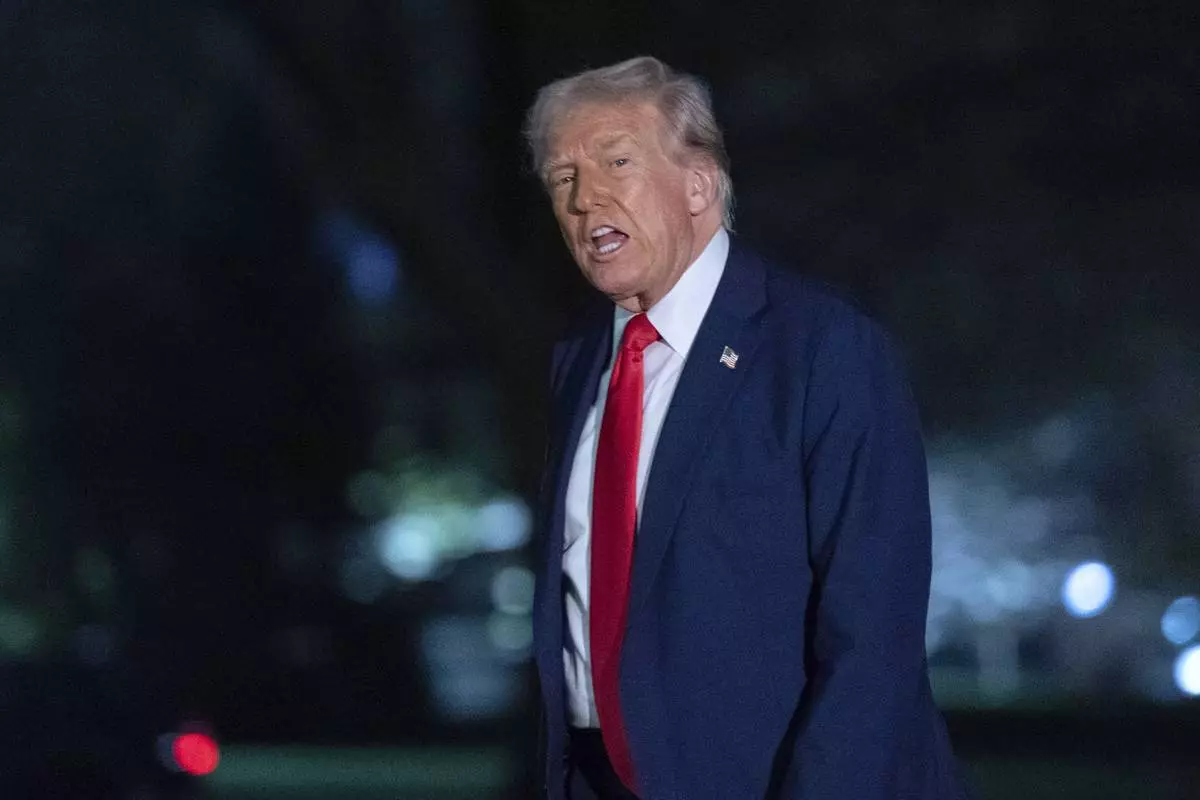
President Donald Trump talks to reporters as he walks on the South Lawn of the White House, in Washington, Sunday, March 30, 2025. (AP Photo/Jose Luis Magana)
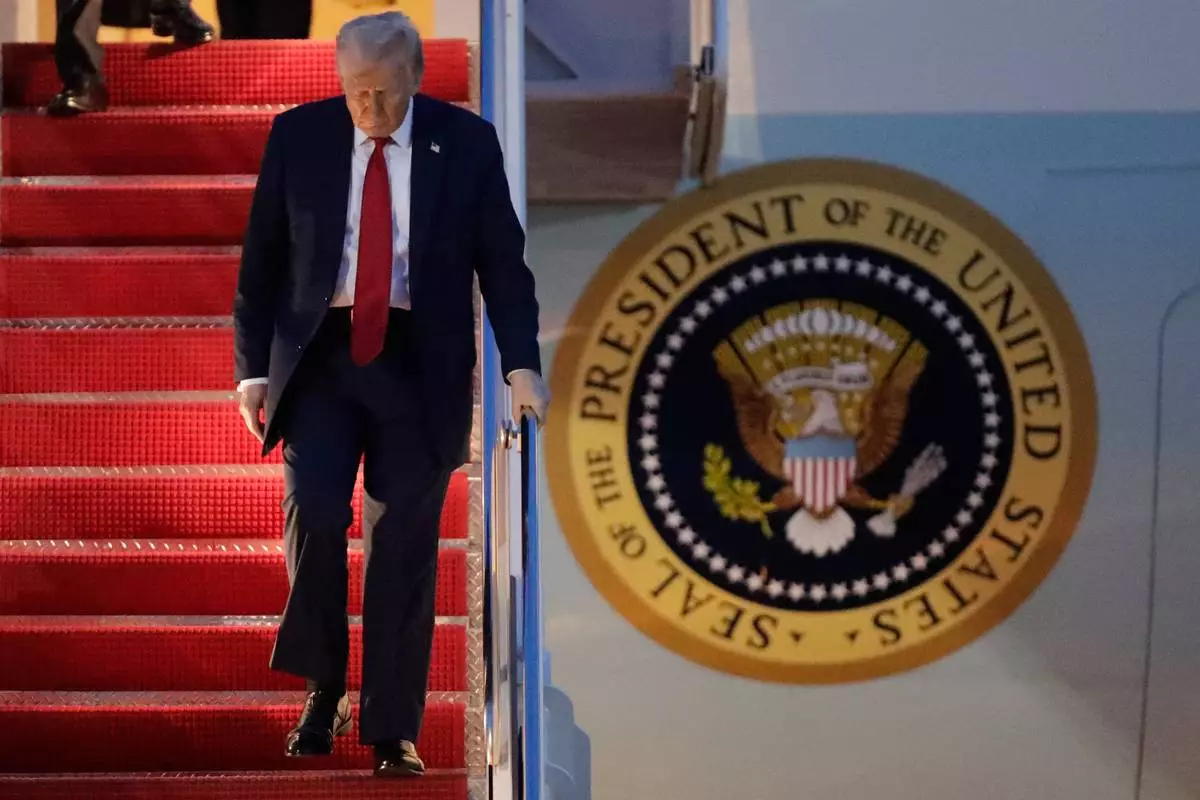
President Donald Trump walks down the stairs of Air Force One upon his arrival at Joint Base Andrews, Md., Sunday, March 30, 2025. (AP Photo/Luis M. Alvarez)





